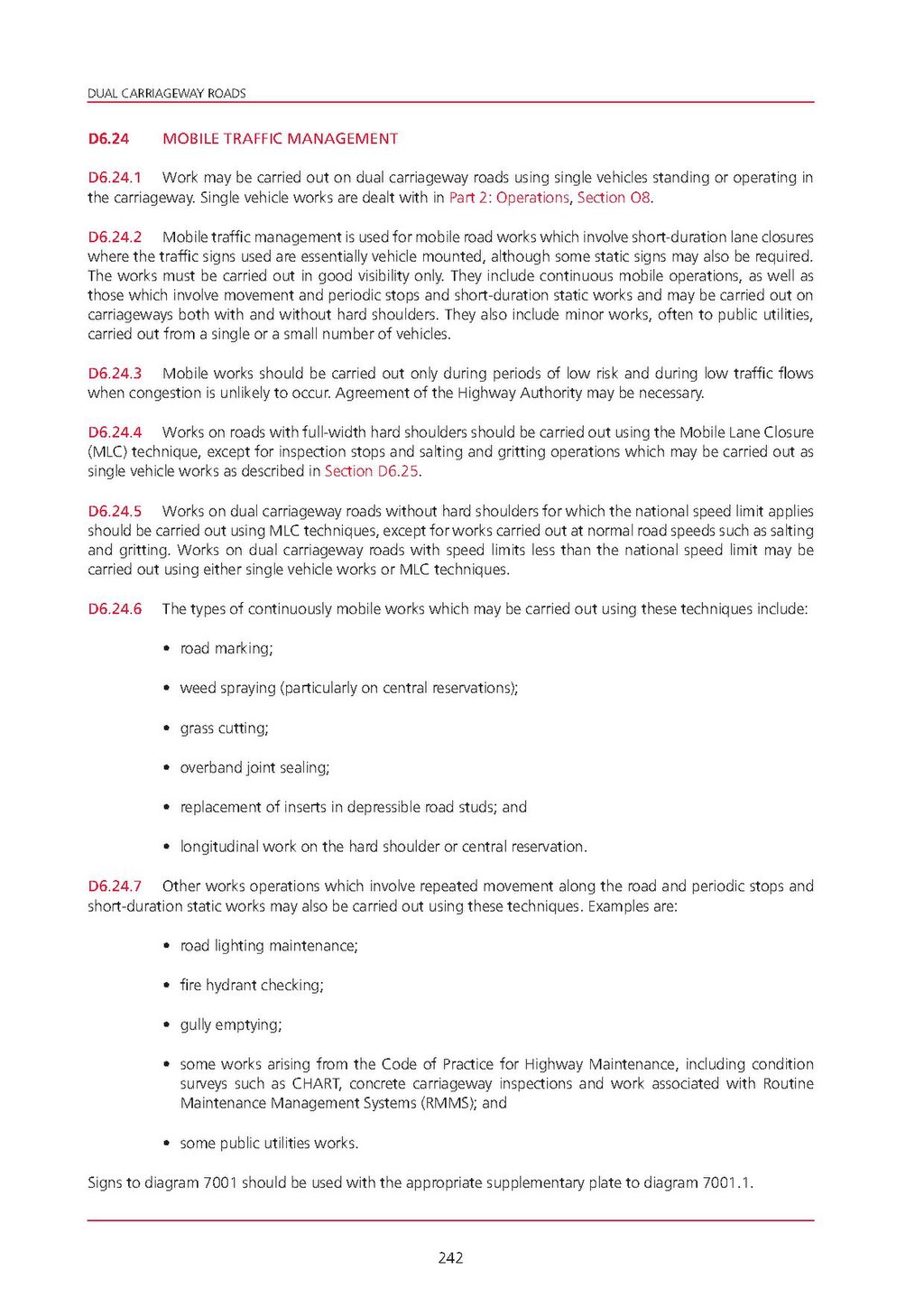D6.24MOBILE TRAFFIC MANAGEMENT
D6.24.1 Work may be carried out on dual carriageway roads using single vehicles standing or operating in the carriageway. Single vehicle works are dealt with in Part2: Operations, Section O8.
D6.24.2 Mobile traffic management is used for mobile road works which involve short-duration lane closures where the traffic signs used are essentially vehicle mounted, although some static signs may also be required. The works must be carried out in good visibility only. They include continuous mobile operations, as well as those which involve movement and periodic stops and short-duration static works and may be carried out on carriageways both with and without hard shoulders. They also include minor works, often to public utilities, carried out from a single or a small number of vehicles.
D6.24.3 Mobile works should be carried out only during periods of low risk and during low traffic flows when congestion is unlikely to occur. Agreement of the Highway Authority may be necessary.
D6.24.4 Works on roads with full-width hard shoulders should be carried out using the Mobile Lane Closure (MLC) technique, except for inspection stops and salting and gritting operations which may be carried out as single vehicle works as described in Section D6.25.
D6.24.5 Works on dual carriageway roads without hard shoulders for which the national speed limit applies should be carried out using MLC techniques, except for works carried out at normal road speeds such as salting and gritting. Works on dual carriageway roads with speed limits less than the national speed limit may be carried out using either single vehicle works or MLC techniques.
D6.24.6 The types of continuously mobile works which may be carried out using these techniques include:
- road marking,
- weed spraying (particularly on central reservations),
- grass cutting,
- overband joint sealing,
- replacement of inserts in depressible road studs, and
- longitudinal work on the hard shoulder or central reservation.
D6.24.7 Other works operations which involve repeated movement along the road and periodic stops and short-duration static works may also be carried out using these techniques. Examples are:
- road lighting maintenance;
- fire hydrant checking,
- gully emptying,
- some works arising from the Code of Practice for Highway Maintenance, including condition surveys such as CHART, concrete carriageway inspections and work associated with Routine Maintenance Management Systems (RMMS); and
- some public utilities works.
Signs to diagram 7001 should be used with the appropriate supplementary plate to diagram 7001.1.
242
